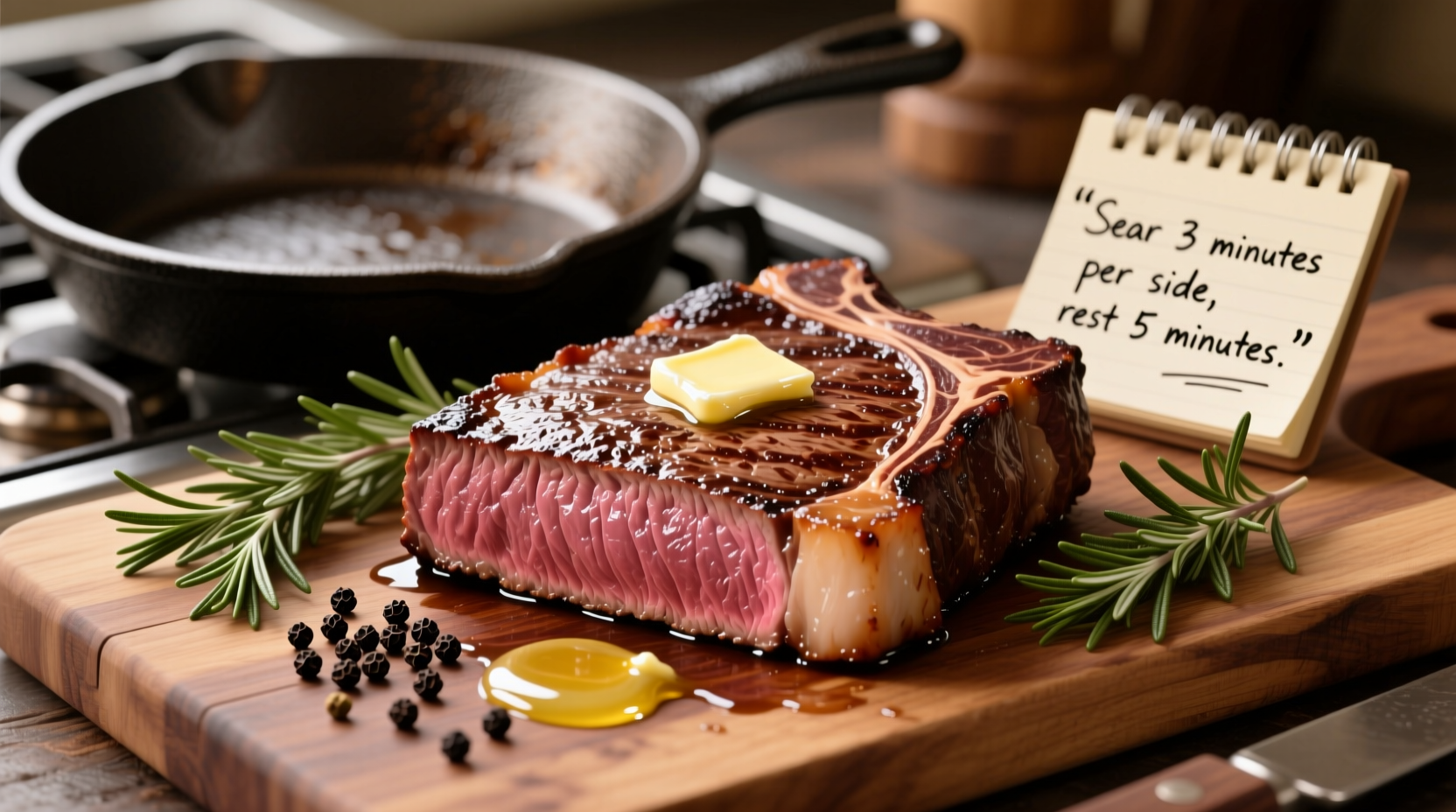Why Deer Steaks Demand Special Cooking Techniques
Unlike beef, deer meat has significantly less fat and connective tissue, making it prone to drying out if cooked improperly. Venison's lean composition requires precise temperature control—overcooking by just 5°F can transform a tender steak into tough, chewy meat. According to USDA Food Safety and Inspection Service guidelines, wild game should reach 145°F internal temperature with a 3-minute rest period for safe consumption, but experienced hunters and chefs know that 130-135°F yields optimal tenderness for premium cuts like backstrap.

The Critical Pre-Cooking Preparation Process
Proper preparation makes or breaks your deer steak experience. Follow this sequence for best results:
1. Aging Your Venison (Optional but Recommended)
Professional hunters and game processors typically age venison for 7-14 days at 34-38°F. This enzymatic process breaks down muscle fibers, enhancing tenderness. Home cooks can achieve similar results through controlled marinating.
2. Effective Tenderizing Methods
Choose one of these proven techniques:
- Acid-based marinades (buttermilk, vinegar, citrus) for 4-12 hours
- Dry brining with 1% salt by weight for 1-2 hours before cooking
- Mechanical tenderizing using a Jaccard tool for thicker cuts
| Cooking Method | Ideal Temperature | Cooking Time (1.5" thick) | Best For |
|---|---|---|---|
| Pan-searing | 130-135°F | 3-4 minutes per side | Backstrap, tenderloin |
| Grilling | 135-140°F | 4-5 minutes per side | Ribeye, sirloin |
| Sous vide | 130°F | 1-2 hours + sear | All premium cuts |
Step-by-Step Perfect Deer Steak Method
Preparation Checklist
Before you start cooking, ensure you have:
- Venison steaks brought to room temperature (30-60 minutes)
- Cast iron or heavy-bottomed skillet preheated to 450°F
- High smoke-point oil (avocado or grapeseed)
- Digital thermometer ready
- Resting plate prepared
The 5-Step Cooking Process
- Dry the surface thoroughly with paper towels—moisture prevents proper searing
- Season simply with coarse salt and freshly ground pepper (avoid garlic/onion powder which burn easily)
- Sear aggressively for 2-3 minutes per side without moving the steak
- Finish in oven if thicker than 1.5" (4-6 minutes at 375°F) until reaching target temperature
- Rest for 5-7 minutes tented with foil—this allows juices to redistribute
Avoiding the #1 Mistake: Overcooking Deer Meat
Over 70% of home cooks ruin deer steaks by cooking them beyond medium. Venison's low fat content means it dries out quickly. The University of Minnesota Extension Service confirms that wild game requires lower final temperatures than domestic meats. Use this temperature guide:
- Rare: 120-125°F (bright red center)
- Medium-rare: 130-135°F (warm red center) Recommended for best texture
- Medium: 140-145°F (pink center) Maximum recommended doneness
- Well-done: 160°F+ (gray throughout) Avoid—results in tough, dry meat
Flavor Enhancement Strategies
While some perceive venison as "gamey," this is often due to improper field dressing or aging. Counteract any strong flavors with these chef-approved techniques:
Marinade Formulas That Work
For 2 lbs of venison:
- Classic Red Wine Marinade: 1 cup red wine, 1/4 cup olive oil, 2 tbsp balsamic, 3 garlic cloves, 1 tbsp rosemary
- Asian-Inspired: 1/2 cup soy sauce, 1/4 cup honey, 2 tbsp sesame oil, 1 inch ginger, 2 garlic cloves
- Simple Buttermilk Soak: 2 cups buttermilk, 1 tbsp salt, 1 tsp black pepper (4-12 hours)
Post-Cooking Flavor Boosters
Elevate your finished steak with:
- Fresh herb compound butter melting over the top
- Red wine reduction sauce with shallots
- Wild mushroom pan sauce using the steak drippings
Special Considerations for Different Cuts
Not all deer steaks are created equal. Understanding cut characteristics prevents disappointment:
- Backstrap (loin): Most tender cut—treat like filet mignon, cook rare to medium-rare
- Tenderloin: Extremely lean—best cooked sous vide or quickly seared
- Sirloin: More connective tissue—benefits from marinade and slightly higher final temperature
- Round steaks: Tougher cut—requires marinating and slow cooking methods
Troubleshooting Common Deer Steak Problems
"My deer steak turned out tough"
This usually happens because:
- You cooked beyond 140°F internal temperature
- The meat wasn't properly rested before slicing
- You sliced with the grain instead of against it
"The meat tastes too gamey"
Address this by:
- Using buttermilk marinade to neutralize flavors
- Trimming all silver skin and fat (where strong flavors concentrate)
- Ensuring proper field dressing within 30 minutes of harvest
Serving Suggestions That Complement Venison
Pair your perfectly cooked deer steak with these traditional accompaniments:
- Starchy sides: Wild rice pilaf, roasted potatoes with rosemary, creamy polenta
- Veggie pairings: Sautéed mushrooms, roasted root vegetables, green beans with almonds
- Wine recommendations: Pinot noir, Syrah, or Zinfandel for red; Chardonnay for white











 浙公网安备
33010002000092号
浙公网安备
33010002000092号 浙B2-20120091-4
浙B2-20120091-4